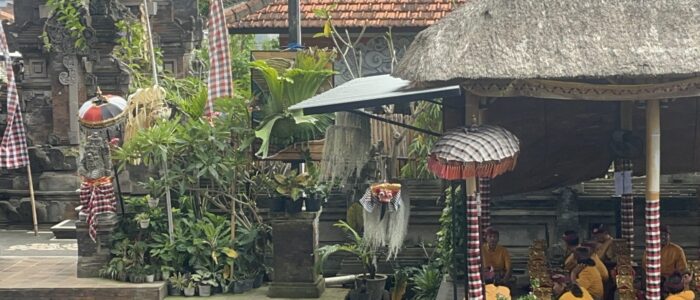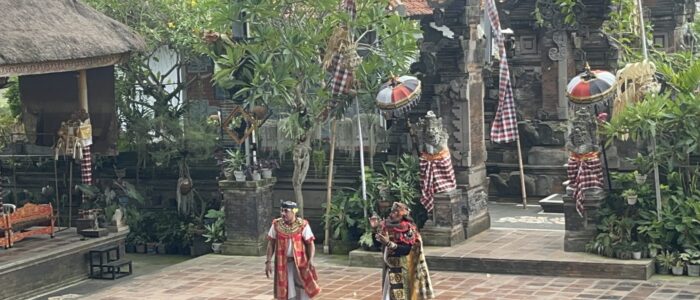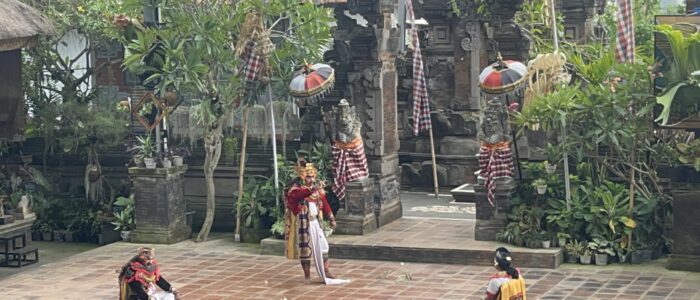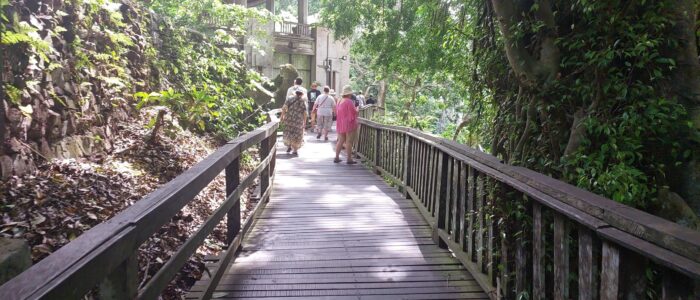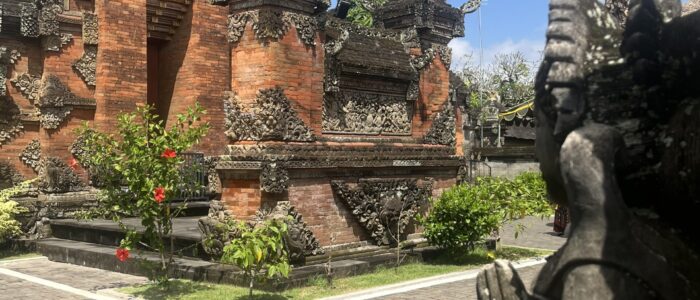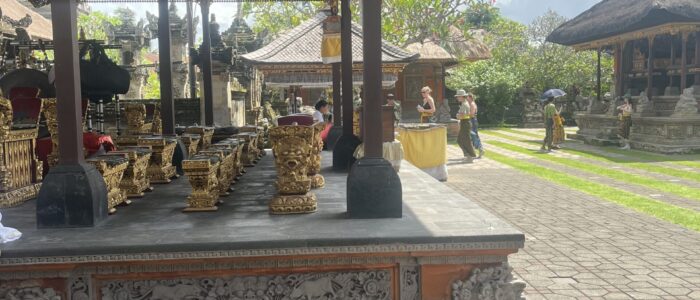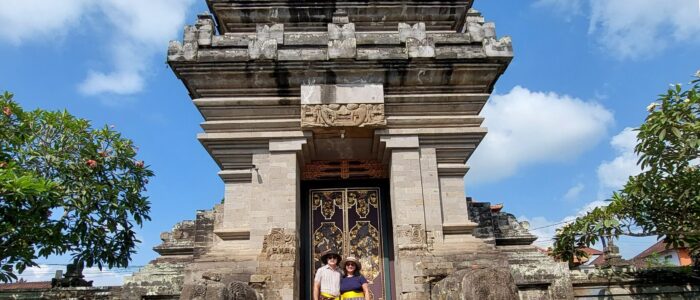The Barong Dance is one of Bali’s most iconic traditional performances, representing a vital part of Balinese cultural and spiritual life. This dance is often showcased during religious ceremonies and festivals, reflecting the island’s rich heritage.
Barong is depicted as a mythological creature, symbolizing the forces of good that combat evil spirits. In the performance, Barong is usually portrayed by a dancer wearing an elaborate costume resembling a lion or lion-like creature, adorned with intricate decorations and vibrant colors. The costume often includes long hair and beard, creating a majestic and impressive appearance.
The Barong Dance typically features two main characters: Barong and Rangda. Rangda represents the evil spirit in Balinese mythology. The dance dramatizes the battle between Barong, who embodies goodness, and Rangda, who embodies malevolence, symbolizing the eternal struggle between good and evil. In the story, Barong and his followers strive to protect the community from Rangda’s threats with magical powers and bravery.
During the performance, the dancers execute energetic and dynamic movements, accompanied by traditional Balinese gamelan music. This music enhances the power and rhythm of the dance, while the colorful and intense choreography adds visual splendor.
The Barong Dance is more than just a performance; it carries deep spiritual significance. It reflects Balinese cultural values, spiritual beliefs, and the relationship between humans and the spirit world. Watching the Barong Dance provides a glimpse into the rich cultural tapestry of Bali and offers insight into the symbolic meanings embedded in the island’s daily life.
Full Description
Barong Dance
Barong dance is one of Bali’s most famous and culturally significant traditional dances, embodying the eternal struggle between good and evil. The dance features Barong, a mythical lion-like creature symbolizing good, and Rangda, a fearsome witch representing evil. This dynamic performance is rich in elaborate costumes, intricate choreography, and vibrant music played by a gamelan orchestra. The Barong costume, often operated by two dancers, is adorned with ornate carvings, mirrors, and a flowing mane, creating a mesmerizing and captivating presence on stage.
The narrative of the Barong dance is drawn from Balinese mythology and often depicts scenes from the epic tale of the Mahabharata. It involves dramatic and theatrical battles between Barong and Rangda, with the storyline reflecting the philosophical balance of good and evil in the universe. The dance is not only a form of entertainment but also a spiritual performance that plays an essential role in Balinese culture and religious rituals. Performed at various temple festivals and cultural events, the Barong dance offers both locals and tourists an enchanting glimpse into Bali’s rich artistic and spiritual traditions.
Batuan temple
Pura Puseh Batuan is a significant temple located in the village of Batuan, about 10 kilometers from Ubud in Bali. This temple is renowned for its exquisite traditional Balinese architecture and serves as a central hub for religious and cultural activities in the local community.
The temple features stunning traditional Balinese design, characterized by intricate carvings and detailed ornamentation. The main structure of Pura Puseh Batuan includes several components, such as meru (tiered pagodas), pelinggih (altars), and the central temple building surrounded by stone walls. Each architectural element is meticulously crafted, showcasing the elegance and artistry of Balinese craftsmanship.
Within the temple complex, there are various structures serving different purposes, such as Bale Dangin (a pavilion for ceremonial events), Bale Sakenan (a prayer hall), and Candi Bentar (decorative gateway). The temple also boasts a spacious courtyard that is often used for religious ceremonies and festivals.
One of the main attractions of Pura Puseh Batuan is the extensive stone carvings that adorn almost every wall of the temple. These carvings depict various Balinese mythological motifs, including epic tales, deities, and mythical creatures, reflecting the island’s religious beliefs and cultural history.
Pura Puseh Batuan is also known for its religious ceremonies, including purification rituals and offerings. These ceremonies are not only spiritual practices but also occasions for the local community to celebrate and preserve their cultural traditions.
Overall, Pura Puseh Batuan is a valuable destination for those wishing to gain a deeper understanding of Balinese culture and religion, while enjoying the captivating beauty of its architecture and intricate carvings.
Goa gajah Temple
Goa Gajah, also known as the Elephant Cave, is a historic and spiritual site located near Ubud, Bali. Renowned for its ancient cave and archaeological significance, Goa Gajah is an important religious and cultural landmark.
The cave, carved into a cliff face, features an intricately detailed entrance resembling a giant’s face with a gaping mouth. Believed to have been used for meditation and religious activities since the 11th or 12th century, it stands as an outstanding example of ancient Balinese stone carving.
Inside the cave, there are several altars and spaces used for worship. The Goa Gajah complex also includes a beautiful garden with ancient bathing pools and various architectural structures. The bathing pools, known as “Taman,” consist of several ponds with sacred water believed to have healing properties.
In addition to the cave and bathing pools, the surrounding area features various stone statues and small temples that enhance the site’s beauty. These statues depict Hindu deities and mythical creatures, reflecting Balinese beliefs and culture.
Goa Gajah offers a rich blend of historical and spiritual beauty, providing an opportunity to explore Bali’s cultural heritage while enjoying a serene and tranquil environment. The site is a popular destination for visitors interested in delving deeper into Bali’s history and religious practices.
About this Activity
- Duration is about 10 – 12 hours
- Pickup service at your hotel in Bali
- Pickup time 08.00am
- English speaking driver
Activity
- Barong Dance
- Batuan Temple
- Goa Gajah temple
- Agroturism
Include
- Tourist Attraction Tickets
- Lunch
- Mineral water
- Vehicle Clean and Fragrant
- Round-trips transfers to and from your hotel
- Pick-up time 08.00am
Exclude
- Other personal expenses
- Tips and gratuities
- Insurance
Notes
- Min book 2 person
- If you book only 1 person an additional fee will be charged
For any inquiries or to arrange a cash-on-delivery payment, please reach out to our customer service team, available 24/7.

